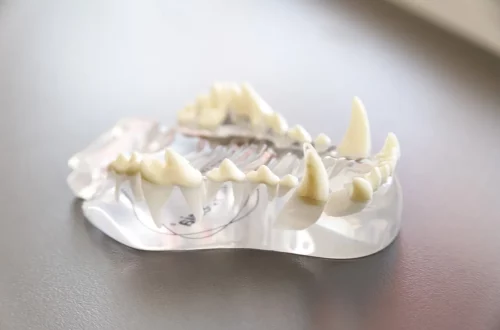
Vibrant Color Tattoos: A Guide for Dark Skin Tones
Tattoos have long served as a form of self-expression, marking significant milestones, beliefs, or simply a love for art. The tattooing industry has evolved remarkably over the years, welcoming various styles, techniques, and colors. While bold black and gray tattoos have traditionally dominated the scene, vibrant colors are becoming increasingly popular, especially among individuals with darker skin tones.
For many, the challenge lies in finding a tattoo artist who understands how to work with the unique characteristics of darker skin. The skin’s undertones, the saturation of colors, and the final appearance of the tattoo can differ vastly from lighter skin tones. As the demand for colorful tattoos rises within the darker-skinned community, artists are adapting their techniques to ensure that every piece shines vibrantly.
Understanding how colors manifest on dark skin, and the best practices for achieving stunning results, is essential for anyone considering a colorful tattoo. The fusion of artistry, skin tone, and color theory can create breathtaking designs that not only enhance personal style but also celebrate individuality.
Understanding Skin Undertones
When it comes to tattoos, skin undertones play a critical role in how vibrant colors appear once inked. Dark skin tones can have varying undertones, including cool, warm, and neutral. Recognizing your undertone is essential for selecting colors that will pop against your skin.
Cool undertones often have hints of blue or purple, while warm undertones may feature yellow or golden hues. Neutral undertones can be more versatile, accommodating a mix of colors. Tattoo artists often use a color theory approach to determine which shades will work best. For instance, colors such as reds and oranges generally appear more vivid on warm undertones, while blues and greens can stand out beautifully on cool undertones.
In addition to the undertones, the depth of the skin can also influence color visibility. Darker skin may require brighter or more saturated hues to achieve a striking appearance. This means that lighter shades, which may look vibrant on fair skin, may not translate the same way on darker skin. Therefore, it is crucial to communicate with your tattoo artist about your skin tone and desired outcome to ensure that the final result meets your expectations.
Moreover, artists often recommend testing a few colors on the skin before the actual tattooing process. This allows clients to see how the colors will interact with their skin and make adjustments if necessary. Understanding these elements can significantly enhance the tattooing experience and ensure that the results are nothing short of stunning.
Choosing the Right Tattoo Artist
Finding the right tattoo artist is paramount, especially when it comes to vibrant colors on dark skin. Not all tattoo artists have the same expertise, and those skilled in working with diverse skin tones can make a significant difference in the tattoo’s final appearance.
Begin your search by looking for artists with a portfolio that showcases vibrant tattoos on dark skin. Social media platforms are excellent resources for discovering artists and their work. Pay attention to reviews and testimonials, as they can give insight into the artist’s experience and client satisfaction.
Once you have a shortlist of potential artists, schedule consultations with them. Discuss your ideas, preferences, and any concerns you have about how colors will appear on your skin tone. A good artist will not only listen to your vision but also provide professional feedback based on their experience. They may suggest specific color palettes or techniques that will enhance the design.
It’s also crucial to choose an artist who is well-versed in hygiene and safety practices. Tattooing involves breaking the skin, so ensuring a sterile environment and proper tools is essential to preventing infections and complications. Inquire about their equipment, ink quality, and overall sterilization processes before making a final decision.
Ultimately, a strong rapport with your tattoo artist can lead to a more enjoyable experience. Trusting their expertise allows for better collaboration, resulting in a piece that you will cherish for years to come.
Color Techniques for Dark Skin
Color techniques play a significant role in how tattoos appear on dark skin. Artists often employ specific methods to ensure that colors are not only vibrant but also long-lasting.
One effective technique is layering colors. By applying multiple layers of ink, artists can create depth and vibrancy that stand out against darker skin. This approach can help in achieving a more dynamic look, especially with bright colors like yellows, pinks, and greens. Layering allows the artist to build up the color intensity gradually, making it easier to adjust based on how the ink settles into the skin.
Another technique is using contrasting outlines. A well-defined outline in a contrasting color can enhance the visibility of the tattoo. For instance, incorporating black or dark blue outlines around brightly colored elements can help the colors pop even more. This not only creates a visually appealing tattoo but also adds a level of sophistication to the design.
Moreover, some artists may recommend using specific inks designed for darker skin tones. These inks are often formulated to provide better saturation and longevity, ensuring that the tattoo retains its vibrancy over time. It’s essential to discuss the type of ink your artist uses, as high-quality materials can make a significant difference in the overall outcome.
Aftercare is equally crucial for maintaining color vibrancy. Following the artist’s aftercare guidelines, such as avoiding excessive sun exposure and keeping the tattoo moisturized, can help preserve the colors and prevent fading.
In summary, understanding the color techniques used for dark skin can significantly impact the tattoo’s final appearance. By collaborating with a skilled artist and following best practices, you can achieve a colorful and vibrant tattoo that reflects your personal style.
Celebrating Individuality Through Color
Tattoos are a powerful form of self-expression, and vibrant color tattoos offer a unique way to celebrate individuality, especially for those with dark skin tones. Each tattoo can tell a story, symbolize beliefs, or simply serve as a piece of art that reflects one’s personality.
Choosing colors that resonate with you personally can enhance the connection you have with your tattoo. Whether you opt for bold reds that signify passion, calming blues that represent tranquility, or bright yellows that evoke happiness, the colors you choose can be a reflection of your inner self.
Additionally, vibrant tattoos can serve as a statement of pride in one’s heritage. Many cultures incorporate vibrant colors into their traditional art forms, and tattoos can be a way to honor those roots. By selecting designs and colors that align with your cultural background, you can create a meaningful piece that resonates deeply.
Moreover, the growing trend of colorful tattoos among dark-skinned individuals is helping to redefine beauty standards in the tattoo community. As more people embrace vibrant ink, it encourages a broader acceptance of diverse skin tones and artistic expressions. This shift not only empowers individuals to express themselves freely but also inspires artists to continue developing their skills and techniques.
In conclusion, vibrant color tattoos on dark skin are not just a trend; they are a celebration of individuality, culture, and artistry. By understanding the unique aspects of skin tones, collaborating with skilled artists, and choosing meaningful designs, anyone can enjoy stunning tattoos that truly reflect who they are.
**Disclaimer:** This article is for informational purposes only and does not constitute medical advice. For any health-related concerns, please consult a qualified healthcare professional.




